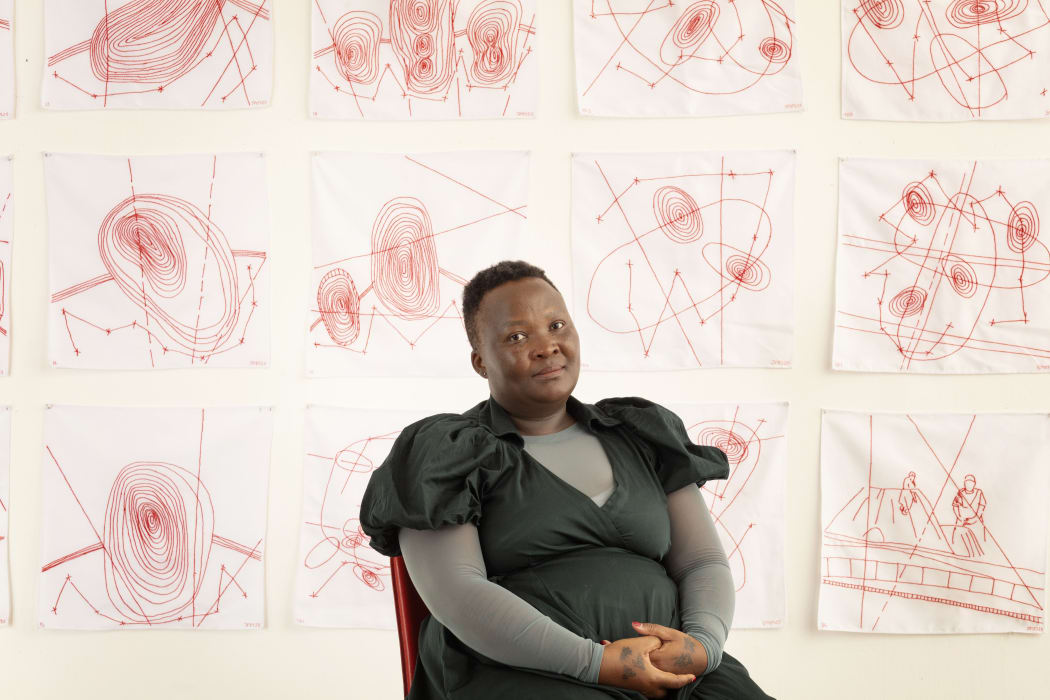
© Senzeni Marasela. Image: courtesy of Kalashnikovv Gallery. Photo: by Thys Dullaart
To begin, please tell us, how did your artistic journey start?
I did art in school and when I was around thirteen, I made this choice. At that time, I understood that art could be a career, as in the 1980s we observed the enormous success of Andy Warhol and some other artists. I understood that I would like to spend the rest of my life working as an artist, documenting history, telling stories of other Black women. I was young but I met quite a few great South African artists, like Helen Sebidi. She turns 81 this year having built an international career of over 50 years. I had access to these artists, and this has had influence on my career choise. Even though back then I didn't know what would happen, I understood that this is what I would like to do the rest of my life – be a storyteller. And I did have wonderful inspiring examples in front of me.
How does your usual day in the studio look like?
I work every day, full-time, and I think that's why I'm quite prolific in production. I also spend a lot of time reading documents from archives, as I am currently dealing with research dedicated to South African mines. I would like to create a complete body of work around the mines; show how they affected the life of Black women in the country.
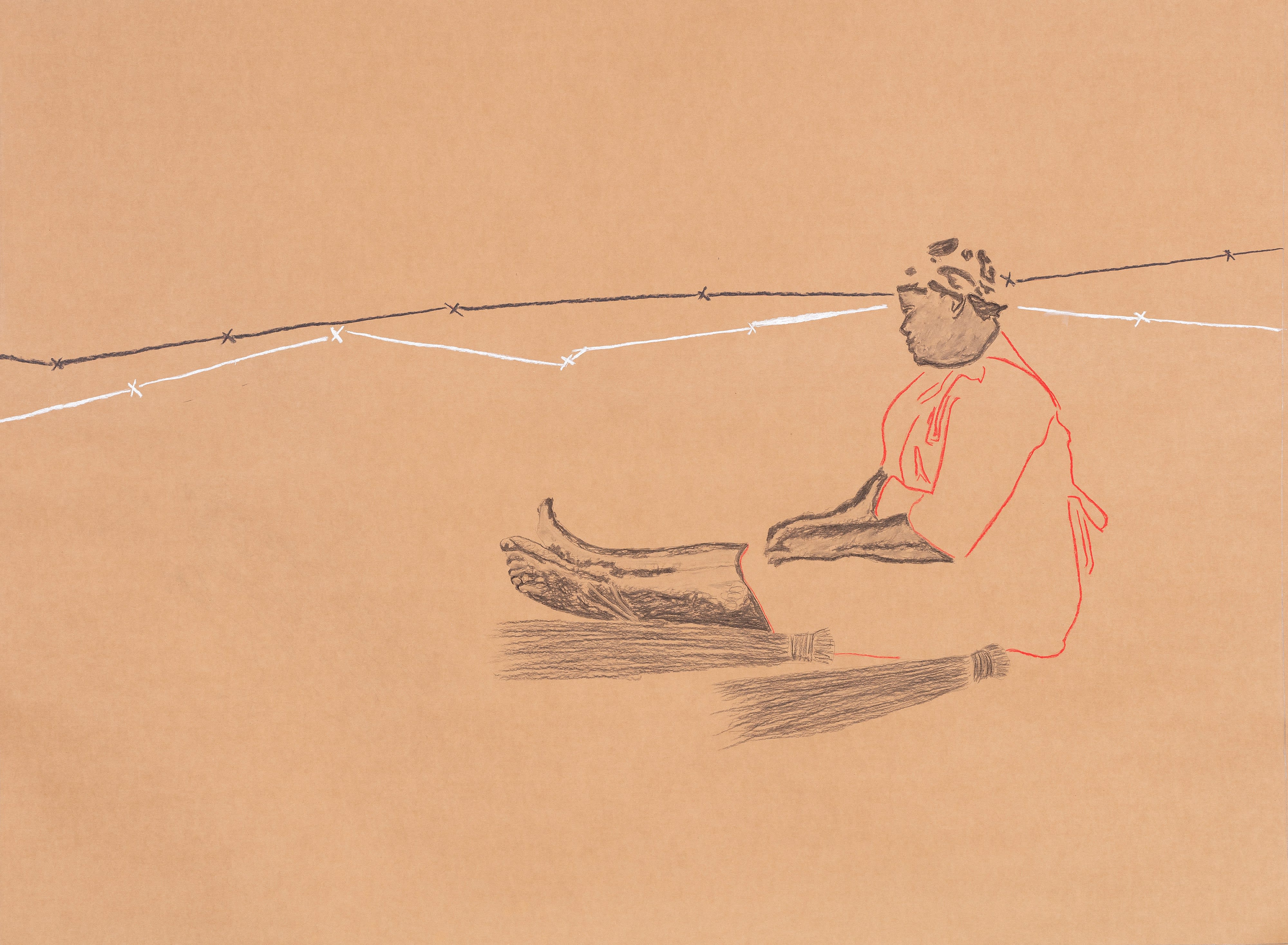
© Senzeni Marasela, Location Unknown III or II?, 2023, Pastel and charcoal on paper, 152 × 200 cm. Image: Bode
Your work taps into cultural memories, telling stories of Black women in South Africa. And you have mentioned your work with archival materials. Could you tell us more?
I do work a lot with archives. At university, cooperating with other researchers, we were investigating the geography of Johannesburg, and studying the history of mines. I should say that I grew up in a place where access to information was very limited and the country suffered from heavy censorship. Books or images that might have been sexually or politically interpreted, were banned. Dolly Parton, or the music that talked about coming out of poverty was not allowed. Anything that have a political connotation was banned, including Bob Marley. A lot of Madonna's music was banned as well, and you could go to jail for carrying an image. I think that's why you find a lot of artists in South Africa, dealing with the archives or photographs. It is such a new thing for us – dealing with gaps in our own histories! We had to rediscover South Africa when Mandela became president. We found images of Black women who went overseas to get a degree, who started churches or schools. So, a lot of my work comes from the archives and the photographs, because in the past we had to hide photographs, just in case one of your uncles broke the law and you didn't want him to be identified. It wasn't easy for us to take out photo albums and show them to people. There is one artist called Santu Mofokeng, who has produced a very powerful series the Black family photographs, speaking particularly about it. Whereas in other cultures family photographs are celebrated, we had to hide ours – from the police, or from other people who may inform the police. So, archives are important, but literature is important as well. A lot of the work that I've been doing, has been driven by Winnie Mandela. She talks about Black women in painful traumatic conditions – waiting for things to change.
You have your first gallery show at Bode in Berlin opening in March. What are the central topics that you are dealing with at this exhibition?
The central figure in my works is the female character of Theodora and everything is consolidated around her. At the I write (stitch) what I like I am going to present a kind of retrospective, taking a bit from everything created over the years with the earliest work dating back to 2015. This is a way of paying tribute to Theodora. Another central idea is the idea of space and occupying space. I stitch what I like – because my work is essentially about it, about stitching narratives, putting things together. It is a way of documenting fragile histories – whether it's a history of Theodora or other women. I use thread to point out the fragility of women, and fragile legacy that I work with. Furthermore, I use soft cloth – to emphasize the softness of my female protagonists. At the show you are going to see a lot of simple objects that you use every day, like the dresses and pieces of cloth that belong to the culture that Theodora comes from. Even my canvas is basically this cloth, which is very familiar in the South African context.
Besides, I have recently started to look at the history of mines and how it affected Black women, whose men disappeared in these dangerous sites. And the threads I use symbolize the depth of these mines; they stand for the men that died there and who have never been found and were buried there. And last but not least – the apartheid. I grew up at the very end of this traumatic period, in the late 80s–early 90s, and my work is aimed at making commentary about the poor conditions of Black women during that historical time.
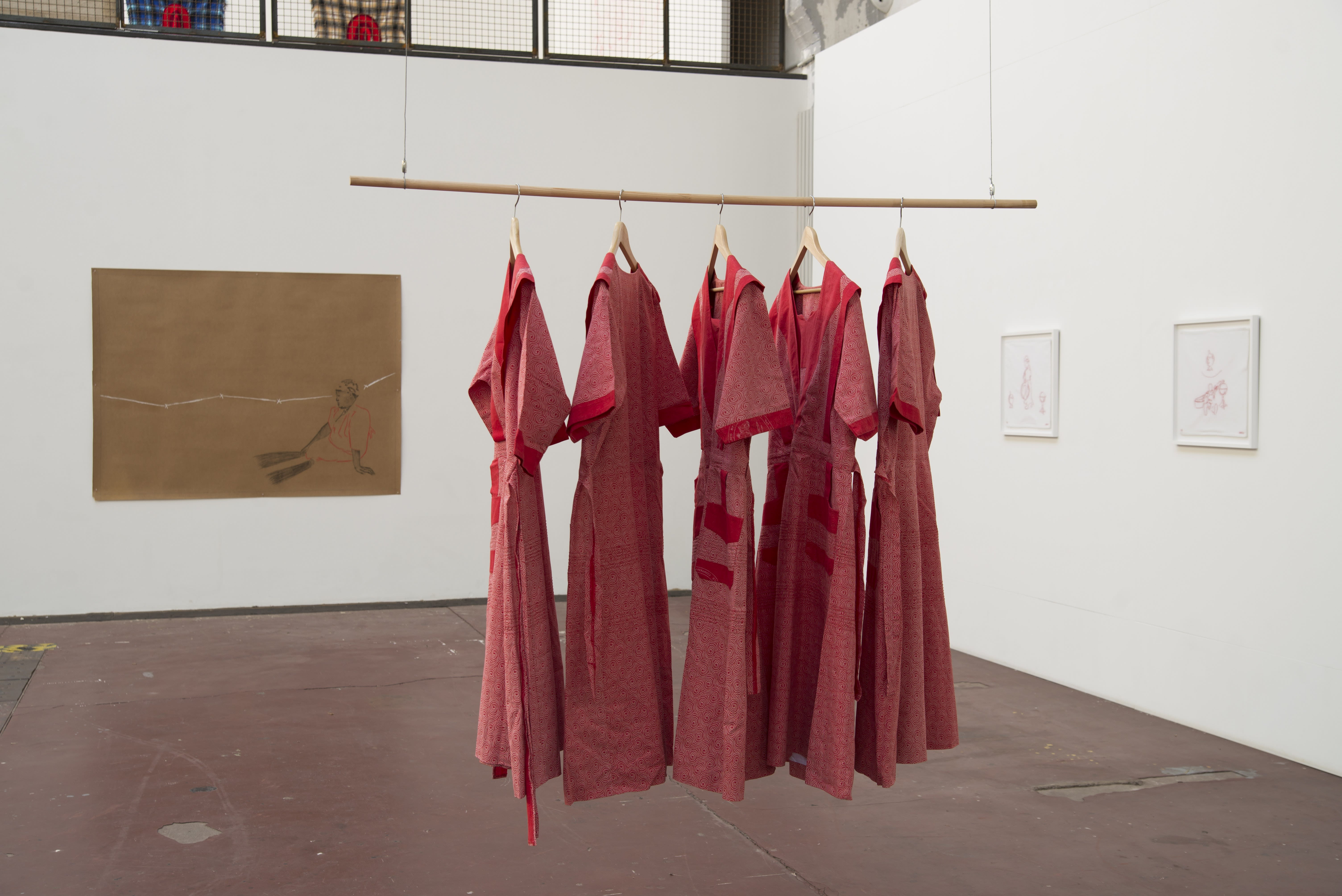
© "I write (stitch) what I like", BODE, Berlin, 2024. Image: Luca Gargano
In your practice you often use red color, which refers to the "Red Dust" – a period of drought in the 1930s in South Africa. Is there any other connotation of red?
The story with red goes back to 1993. I was about 16 then and very curious about one thing – why my father didn't know his date of birth. I asked my grandmother, and she told me that when my father was born, there was a lot of dust in the area. It's a particular time in history – 1933 to 1939. In South Africa, that used to be a British colony at that time, a lot of black soldiers were employed for the army, and some of them ended up in Europe, where they became prisoners. “Red Dust” was a period in history, when men would either join the British Army or go working in the mines. And at this time my father was born, and my grandmother remembers, is that there was a lot of red dust in the area – from horse carriages, passing the village and leaving this dust behind. Thus, there is a reference to red dust in its physical form, but is also a reference to the times of trauma and pain. “Red” color also serves to mark gaps in history, because my father did not know the date of his birth, as he didn't think it was important. And he eventually chose March 31, 1939. But then he had a lot of other dates – at first it was May, and then – July, until he needed to submit it officially when the birth register became electronic (before everything was handwritten). So, the reason, why I choose red– is to mark those periods of not knowing, these gaps in South African history, this period of trauma and loss.
I also thematize the red color working with Theodora, a main protagonist of my work. Doing that I hope to investigate the life of Black women and their mental, spiritual, and physical conditions. I'm quite privileged to live in Johannesburg, since it’s a city that has drawn people from all over the continent – because of the golden rush, because of the wealth that was accumulated here. But it's also a place of disintegration for those Black families, who get removed from the villages by force, it is a migration spot, as people come to work in the mines. And there has never been enough space in the city for Black women – they were historically missing in the archives, and their participation, whether it was a struggle for freedom or for decision-making, was unknown. So, Theodora became a figure through which I reclaim some of these stories, tell them to the public and mark the times of turmoil. The red is permanently in my work, and I guess my audience, whenever they see red, they understand what it symbolizes – me acknowledging historical gaps, trauma, and missing histories. And I don't think it will ever change.
Besides Helen Sebidi, are there any artists who have influenced the development of your art? Where do you generally find inspiration sources while creating new works?
Marlene Dumas, who is a South African artist, living in Amsterdam and an American singer Dolly Parton, I have dedicated an entire body of work to Dolly. And when I was doing my six-year-performance, I also paid tribute to her and to her influence in the African society. She was a kind of an icon in Africa, as a lot of music was banned here. As the society where we grow up, was oppressive towards women, especially towards Black women, Dolly Parton provided us a form of escape, a place of comfort. In her music, she was telling how she overcame her own poverty and became one of the main voices for South African women. Even today there are still people requesting Dolly Parton's music to play on radio. Back at that time, she used to sing on TV from Monday to Thursday – in her sparkly outfits and high heels. She became a permanent part of our lives – something that was so far away and so dreamy.
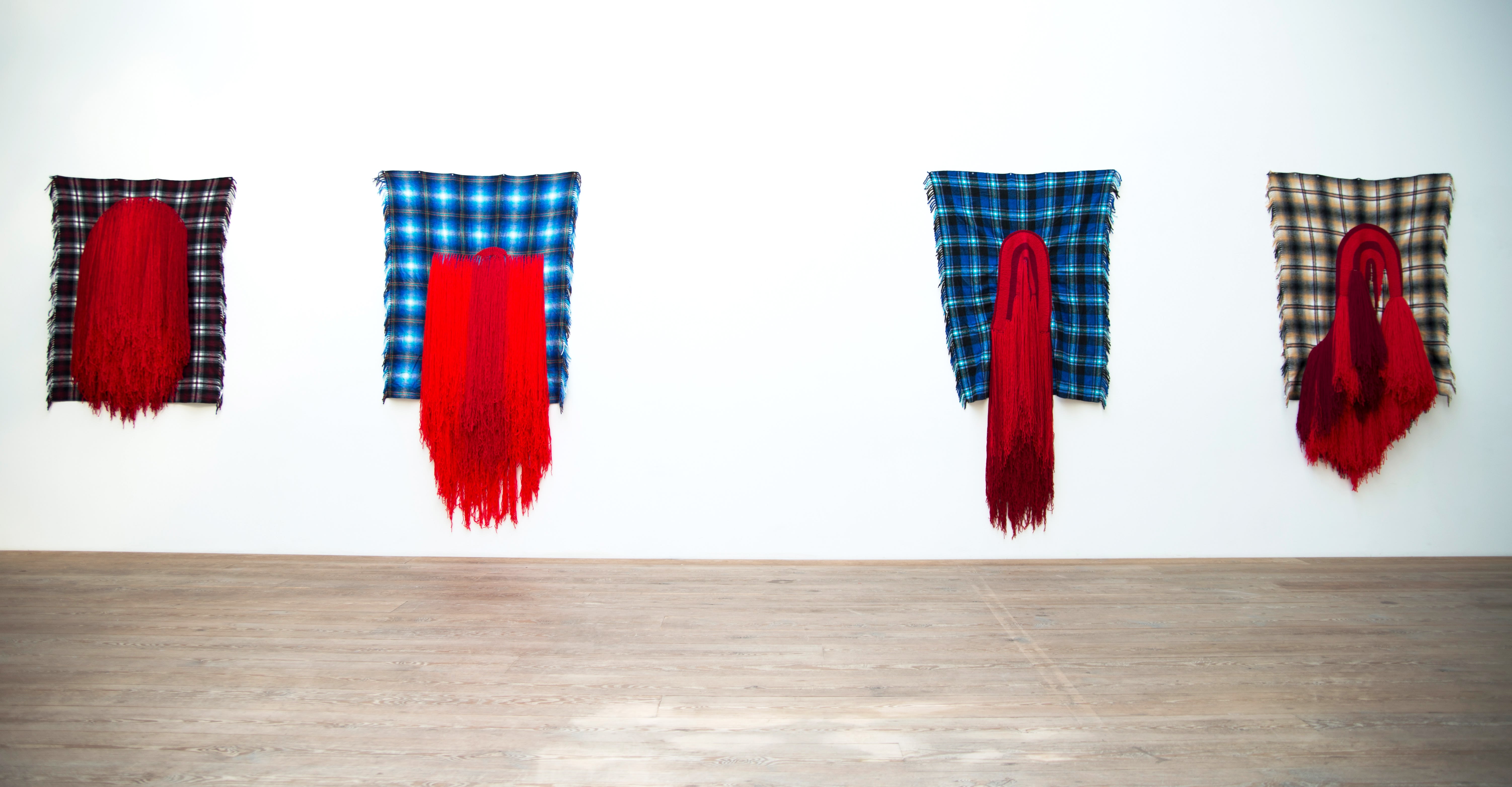
© "I write (stitch) what I like", BODE, Berlin, 2024. Image: Luca Gargano
Last year you have won the K21 Global Art Award, established by the Friends of the Kunstsammlung Nordrhein-Westfalen. How do you feel about it and what does it mean for you as an artist?
I was literally blown away! I've been an artist for 27 years and I have spent most of this time working. I sold my first work in October 1997, that’s how I know how to mark the time. Though I have been working hard all that time, I didn't think anyone was really looking at me. I had exhibited my works, and I knew curators, I participated at art residences, travelled a lot and introduced myself to people. I used to tell my story again and again, but I felt myself in a kind of isolation. When people see my solo show in a major African museum now, they often ask me: “Where have you been all these years??”. And I was right here, working consistently. There hasn’t been a year, when I didn't produce works, didn’t take part at shows, was not travelling – there was always an input from my side. But somehow people didn’t know my work. When you don't have representation as an artist in the modern art world, it becomes very difficult to move further. And last year I won this award in Düsseldorf, and it was a recognition for everything that I have done through all these years. That has given me a lot of strength – to work further, to create all those things that I'd always wanted to do.
You participate in many exhibitions in Europe and in the US – does the perception of your work there differ from that of the local public in Johannesburg?
I think yes, because in South Africa people know the fabric I use, they understand my visual language, because it's part of their life. And when I travelled to Dusseldorf, I had to explain, what my process is and what I was doing and why. But as a great number of people here has access to South African history and a great interest for it – they watch documentaries and movies about South Africa, they were also able to establish links to my works. Besides, people in Africa, in Europe have their own interpretations of my works, as they come from different backgrounds.
How do you see your practice evolving in the future? What are your plans for the next years?
I would like to work at my monograph, as there's not one yet that's been done on my work. Besides, I would like to participate at museum shows, whether in Europe or in America. A full-scale museum show – that is my big goal, as I have so much to present to the public.
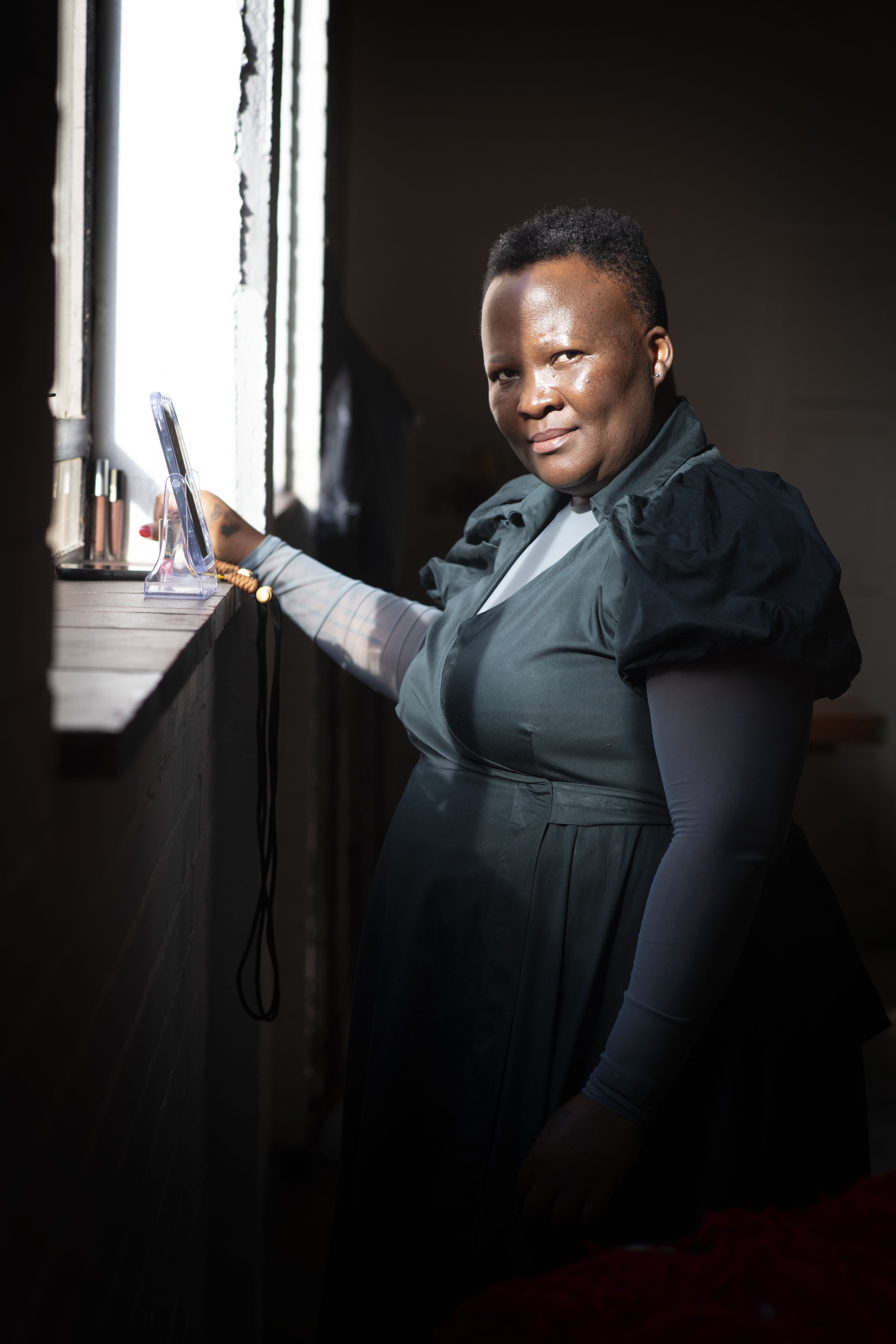
© Senzeni Marasela. Image: courtesy of Kalashnikovv Gallery. Photo: by Thys Dullaart
Interview conducted by Valentina Plotnikova
